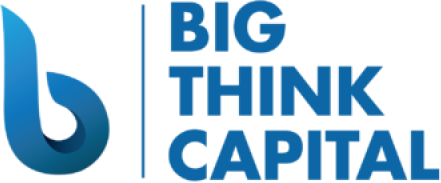Navigating the Impact of Rising Interest Rates on Small Business Financing
Estimated reading time: 5 minutes
- Understand how rising rates affect borrowing costs.
- Implement cash flow management strategies.
- Explore alternative financing sources.
- Nurture bank relationships for better terms.
- Be proactive in financial planning.
Table of contents:
- Current Landscape of Small Business Financing
- Cause and Effect of the Fed’s Decision
- Impact on Financing Options
- Strategies for Managing Working Capital Amid Rising Rates
- Practical Takeaways for Business Owners
- Conclusion
- FAQ
Current Landscape of Small Business Financing
Over the past few years, small businesses have enjoyed relatively favorable borrowing conditions. However, the recent series of rate hikes by the Federal Reserve, which increased the federal funds rate to the highest level in over two decades, has shifted this landscape.
The status quo now presents a series of challenges:
- Interest Rate Increases: As of February 2025, rates have jumped to around 5.5% from near-zero levels in early 2021. This spike has increased the cost of borrowing significantly.
- Demand for Funding: Many small businesses still seek access to debt financing to expand operations, purchase equipment, or manage cash flow. With the cost of money rising, business owners need to reassess how to approach borrowing.
- Variability of Rates: Different financial products react differently to interest changes. For example, fixed-rate loans may not feel the pinch as severely as variable-rate loans, affecting how businesses strategize their financing options.
As small business owners navigate this new reality, understanding the cause and effect of the Fed’s decisions is critical for maintaining financial health.
Cause and Effect of the Fed’s Decision
The Federal Reserve’s interest rate policies are rooted in macroeconomic principles. To combat inflation, the central bank increases interest rates, which directly affects how banks lend money to businesses.
Impact on Financing Options
- SBA Loans: Traditionally favored for their favorable terms, SBA loans are now becoming more expensive as rates rise. The current average interest rates for SBA loans hover around 8% to 10%, affecting borrowing costs for business owners.
- Equipment Financing: For businesses looking to upgrade their machinery or equipment, the cost of financing has also increased. Higher rates mean businesses must evaluate their need for capital expenditures more carefully.
- Merchant Cash Advances: MCAs are typically more expensive due to their repayment structures. With interest rates increasing, the cost associated with obtaining an MCA will rise, making it a less attractive option for many.
- Lines of Credit: Small businesses reliant on lines of credit may face higher interest charges, impacting their cash flow strategies.
Understanding these implications allows small business owners to make calculated decisions regarding their borrowing options.
Strategies for Managing Working Capital Amid Rising Rates
As interest rates increase, effectively managing working capital becomes more critical than ever. Here are some strategies to navigate this new financial landscape:
Optimize Cash Flow Management
- Implement a Cash Flow Forecast: Create monthly cash flow projections to identify potential shortfalls in advance. This ensures that you are not caught off guard by rising costs.
- Tighten Accounts Receivable: Focus on improving the collection of overdue invoices. Offering discounts for early payments or enforcing stricter payment terms can enhance cash flow.
Leverage Financial Technology
Utilize digital cash flow management tools to optimize day-to-day operations:
- Digital Banking Solutions: Platforms like QuickBooks, Xero, or even specialized cash flow management tools can help you get a clearer picture of your financial state in real-time.
- Automated Reporting: Regular financial reporting can illuminate unnecessary expenses and identify areas for cost reduction.
Maintain Strong Bank Relationships
Building and sustaining robust relationships with your bank can be advantageous in times of rising interest rates:
- Communicate Regularly: Reach out to your bank frequently to discuss your financial forecasts, current challenges, and any changes to your business model. A solid relationship can help in negotiating better loan terms or finding alternative financial solutions.
- Explore Flexible Financing Options: A strong relationship may allow you to access better options, such as fixed-rate loans or adjustable loans that can be converted based on your business needs.
Consider Alternative Financing Sources
While traditional banks may increase rates, alternative lenders often provide unique solutions that can fit your needs better:
- Crowdfunding and Peer-to-Peer Lending: These emerging funding sources can sometimes come with lower rates or more flexible terms.
- Local Credit Unions: Often known for more personalized service, local credit unions may offer competitive rates and tailored products that larger banks cannot provide.
Practical Takeaways for Business Owners
As you navigate the current economic challenges, keep these insights in mind:
- Be Proactive: Don’t wait until cash flow problems arise. Plan for financial stability by forecasting your needs in advance.
- Diversify Financing Options: Relying solely on one financing avenue can be risky. Consider a mix of traditional and alternative funding sources to safeguard against interest fluctuations.
- Nurture Financial Relationships: Strong ties with financial institutions can provide leverage for negotiating better terms, especially in tough economic conditions.
Conclusion
The rising interest rates of 2025 present a complex challenge for small business owners navigating financing options. Understanding how these changes affect variability in securing funds for growth and managing cash flow is crucial. Employing smart financial strategies and maintaining strong relationships with your bank will better position your business to thrive despite the challenges posed by higher borrowing costs.
At Big Think Capital, we are dedicated to helping small businesses like yours find the right funding solutions amidst changing economic conditions. If you’re looking to explore your options for working capital or need assistance with financing strategies, we invite you to speak with one of our funding experts or visit us at bigthinkcapital.com. Let us help you navigate these waters successfully.
FAQ
What are SBA loans?
SBA loans are loans backed by the Small Business Administration, known for having favorable terms and lower down payment requirements.
Which financing options are available for small businesses?
Small businesses can access various financing options including SBA loans, equipment financing, lines of credit, and merchant cash advances.
How can small businesses manage cash flow during rising interest rates?
Effective cash flow management can involve creating cash flow forecasts, tightening accounts receivable, and leveraging digital banking tools.






